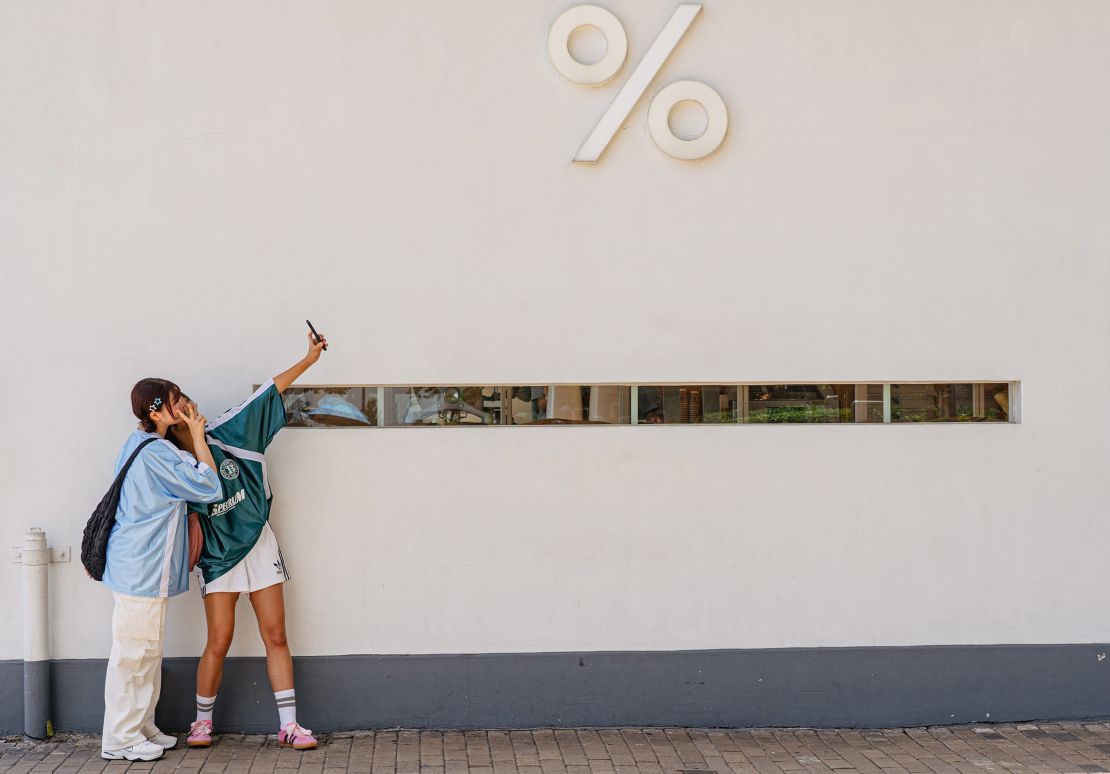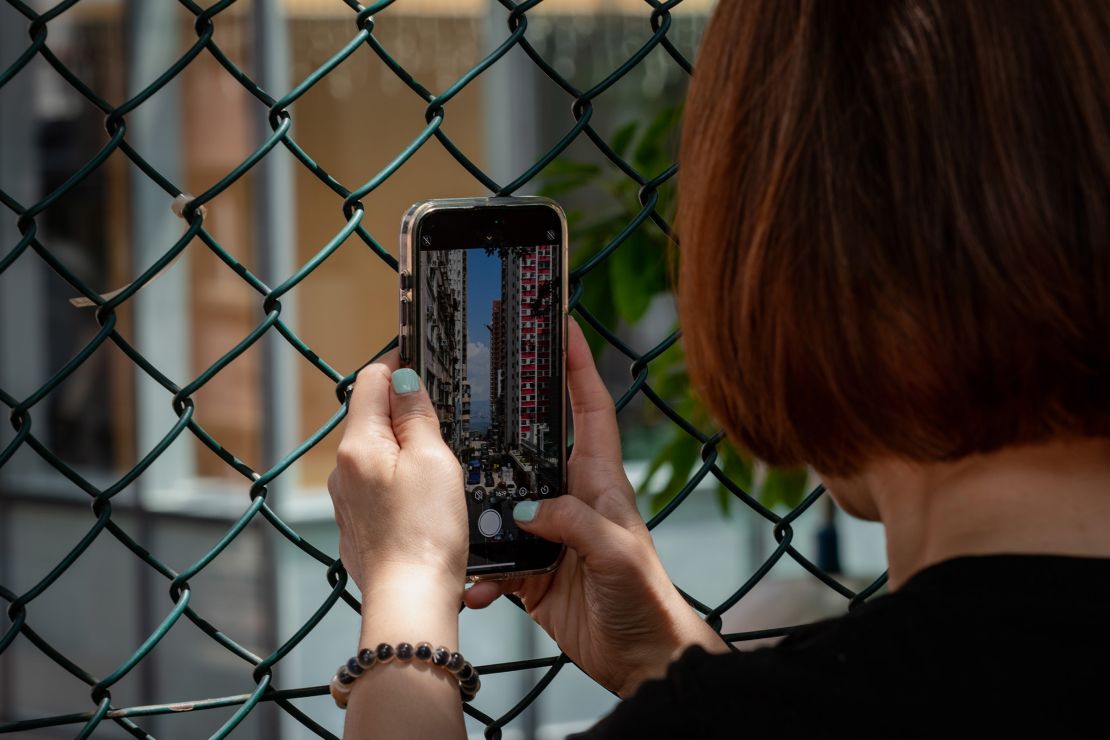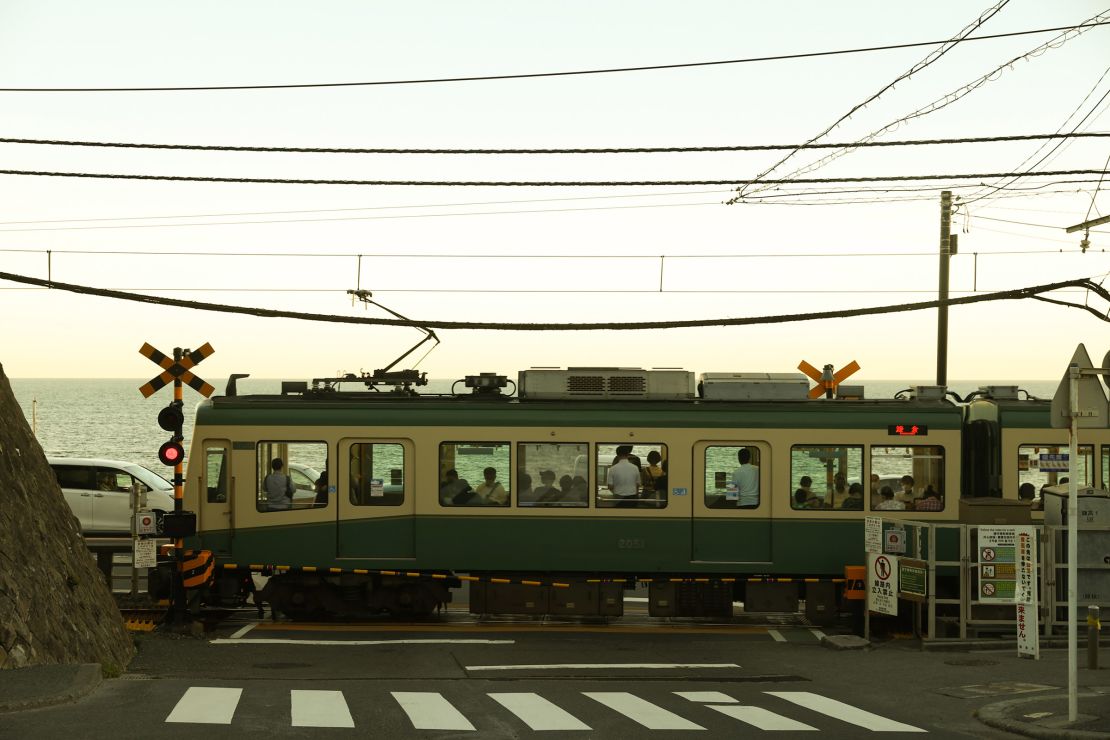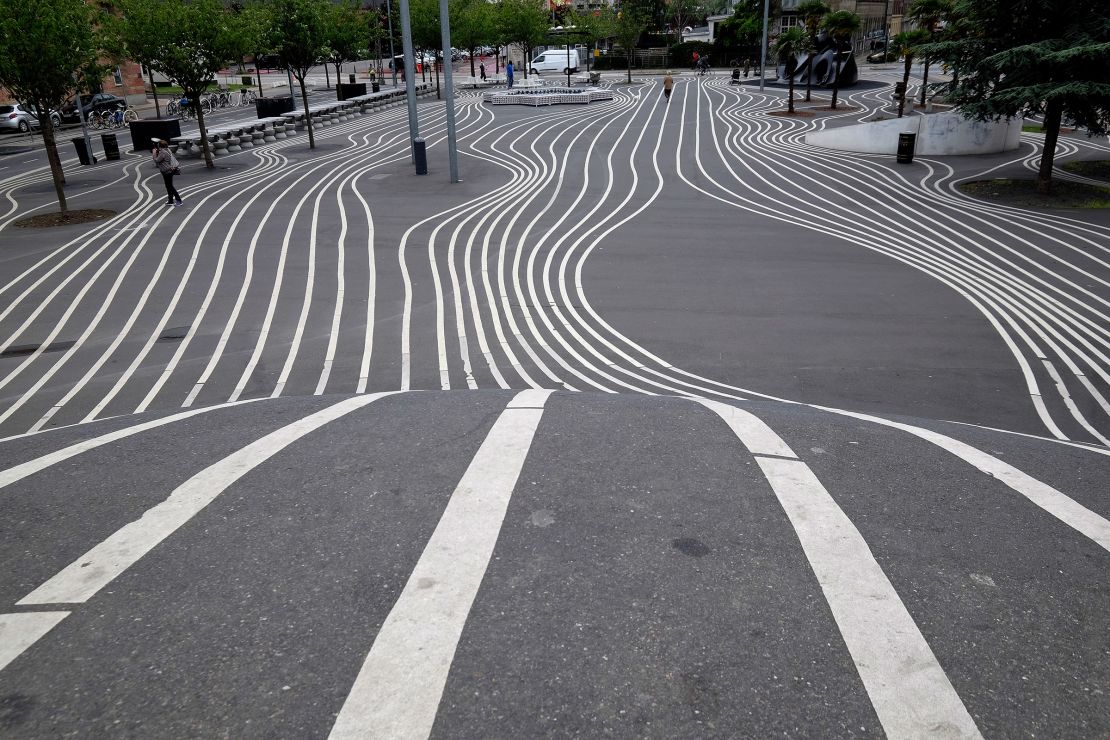Hong Kong
CNN
—
Tucked away in a residential neighborhood in the west of Hong Kong, the Kennedy Town Playground’s basketball courts aren’t particularly noteworthy. Most locals walk past them on their way to somewhere else.
But for many tourists visiting the city from mainland China, the courts are a must-see destination.
They’re not interested in joining a pick-up basketball game. It’s because the courts, perched on the side of a hilly slope, offer great views of the Hong Kong skyline.
Meanwhile, a thousand miles away in Seoul, Mandarin-speaking crowds have been converging on Seongsu-dong, an area known for hip cafes. But instead of sipping lattes, they take pictures of a photogenic wall painted with a red rectangle.
These Chinese travelers aren’t finding out-of-the-way locations by chance. Many of them are followers of Xiaohongshu (Little Red Book), China’s answer to Instagram, which has also become their travel bible.

“(Xiaohongshu) is comprehensive and it offers a lot that other platforms aren’t able to match,” Jiao Le, a tourist from Beijing, told CNN during a recent visit to the basketball courts in Hong Kong.
With 1.4 billion citizens, China is a major force to be reckoned with in the travel market. However many existing travel apps and recommendation tools are not comprehensive in Chinese.
Hence Xiaohongshu has been able to corner the market – and change the way people travel in Asia and beyond. The app’s users have transformed seemingly under-the-radar places not often visited by Western tourists into hotspots for Chinese travelers.
As witnessed in Hong Kong and Seoul, photo ops are a huge part of the appeal. The images look great on social media, in effect encouraging others to visit. For instance, in Copenhagen, instead of heading straight to the Little Mermaid statue or the Tivoli Gardens amusement park, Chinese visitors are flocking to Black Square, a public space at the Superkilen Urban Park in the quiet residential neighborhood of Norrebro where bright white magnetic-field-esque lines have been painted on the ground.
Sometimes the locations have deeper meanings. If you happen to pass a seemingly nondescript bench at the southeastern corner of Central Park in New York and wonder why people are posing for photos, it’s because Mandopop star Jay Chou sat on the same bench during a 2019 vacation.
In Japan, Chinese tourists flock to a train intersection in Kamakura, south of Tokyo, because it appears in “Slam Dunk,” a basketball-themed anime worshipped by many Chinese fans.
China’s sluggish economy may be hurting people’s appetite for travel these days. Still, the numbers have been given a boost this month as Chinese tourists headed overseas for their long National Day holiday (known as Golden Week), which began on October 1.
Chinese travelers made 7.6 million trips in and out of the country during the holiday, up 33.2% year-on-year, according to state broadcaster CCTV. And it’s very likely many of them used Xiaohongshu as a trip-planning resource.
The rise of unexpected destinations almost exclusive to Chinese tourists has a lot – if not everything – to do with the platform.
Most of its users are Chinese nationals, posting predominantly in their native language, so what happens on Xiaohongshu usually stays on Xiaohongshu.
Tourists may discover new exciting spots, but the information reaches few travelers outside of China.

The app’s name is a tongue-in-cheek reference to the red-covered book made up of quotations from the founding father of Communist China, Mao Zedong, though that’s pretty much where the similarities end.
Headquartered in Shanghai, Xiaohongshu was founded by friends Charlwin Mao and Miranda Qu in 2013 as a way for Chinese netizens to share snippets of their lives.
Since then, it’s become one of China’s most popular platforms with 300 million users, according to Chinese social media research firm Qian Gua. Half of its users reportedly come from urban areas and are below the age of 35.
The genres of content have also diversified, now including everything from daily moments to make-up tips, fashion guides and of course travel recommendations.
“It’s more authentic because it’s recommended by a lot of real users and they give their reviews,” Xia Jiale, from the central Chinese city of Luoyang, told CNN Travel. The 26-year-old relied solely on Xiaohongshu to navigate Hong Kong with his wife during their recent trip to the city.
Some businesses in Europe appear to be capitalizing on the trend, including Lobos, which runs two tapas restaurants in London.
“Lobos is officially on Xiaohongshu!” it wrote in a Chinese-language debut post in August, pledging “local Spanish food for you!”
Joel Placeres, one of the restaurants’ directors, told CNN that the app allows them to “build direct connections with the Chinese community, expand our reach and boost the restaurant’s visibility” amidst an array of post-pandemic challenges.

Xiaohongshu is stuffed with users’ reviews of the restaurant, with some posting photos with the chefs. One person declared: “Will keep going as long as it remains open.”
The dishes that draw the most likes on Xiaohongshu are often more sought after at the restaurant, Placeres said. To respond to the demand, the restaurant has added more of these popular foods to its ordering system, making it easier for staff to take Chinese tourists’ orders, he added.
During the 2024 Summer Olympics, several restaurants in Paris also put out signs at the front door touting how much they are loved on Xiaohongshu – in Chinese – while urging customers to leave a good review for them on the social media platform.
But not everyone is thrilled with the increased attention Xiaohongshu can bring. Back in Hong Kong, a crowd has built up near a cafe just across the road from the now-famous basketball courts.

The vintage decor of the cafe makes it another magnet for tourists on the hunt for photogenic spots, including both Jiao and Xia. But the sidewalk is so narrow that the crowds have become an obstacle for elderly locals passing through. Some tourists spill onto the busy road for better angles in the photos.
“Many housewives have complained about it, and it gives rise to conflicts,” said 55-year-old resident Hung, who passes the spot three times a day. (He declined to give his last name out of fear of retaliation for speaking out against the Hong Kong government’s drive to attract mainland tourists.)
“It’s dangerous because it can cause accidents with cars coming through,” he added.
A neighborhood resident of more than 40 years, Hung said governments should do more to mitigate impacts on local communities when the influx of tourists becomes a nuisance.
He has one recommendation not meant for Xiaohongshu, but rather for the authorities in his neighborhood. “At least put up a (traffic warning) sign.”












